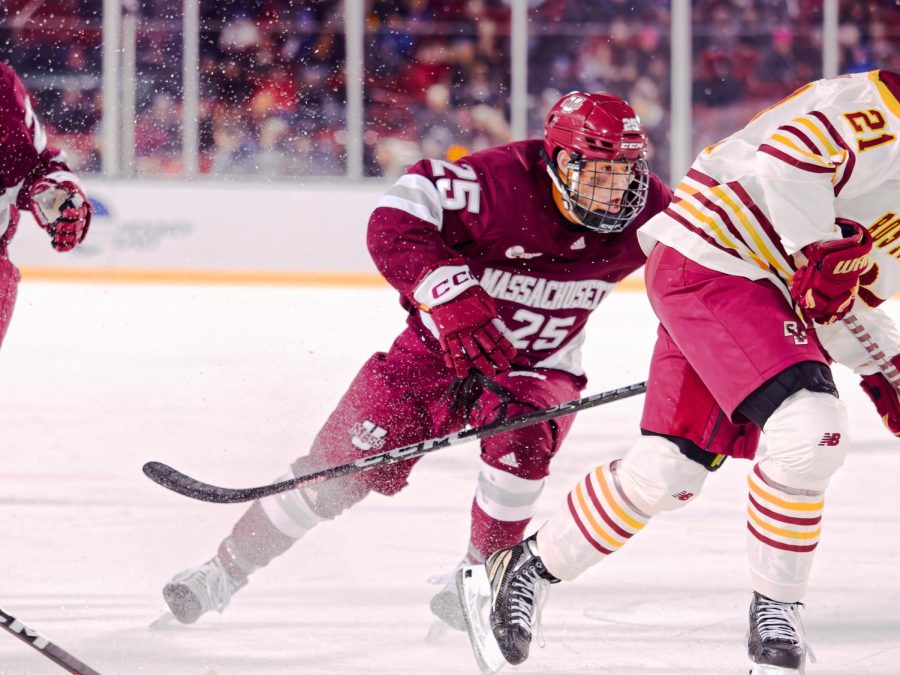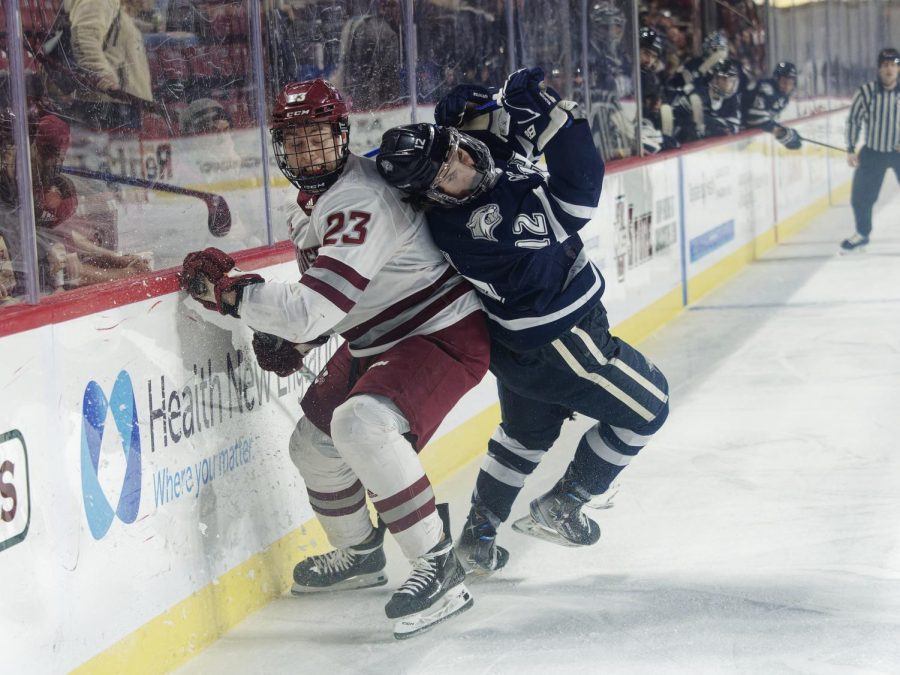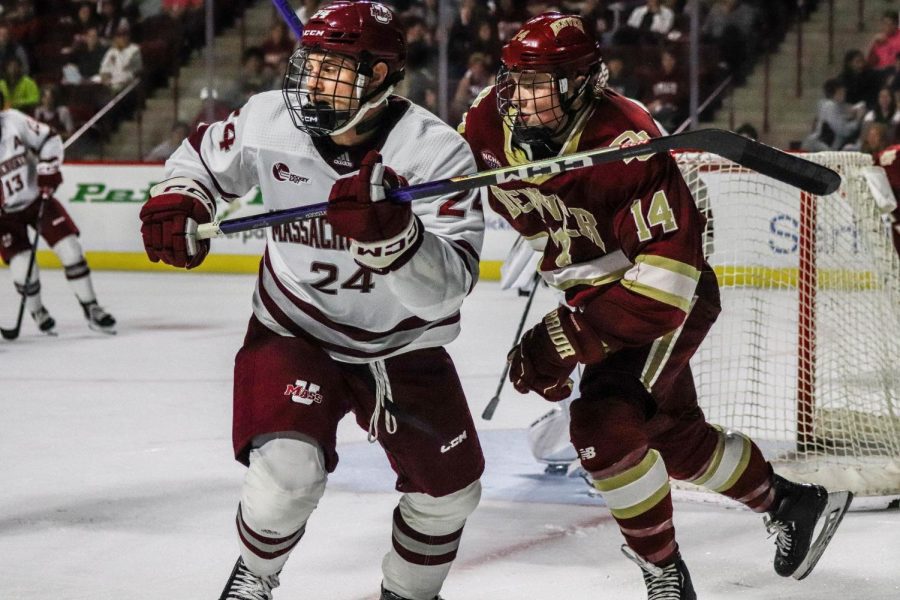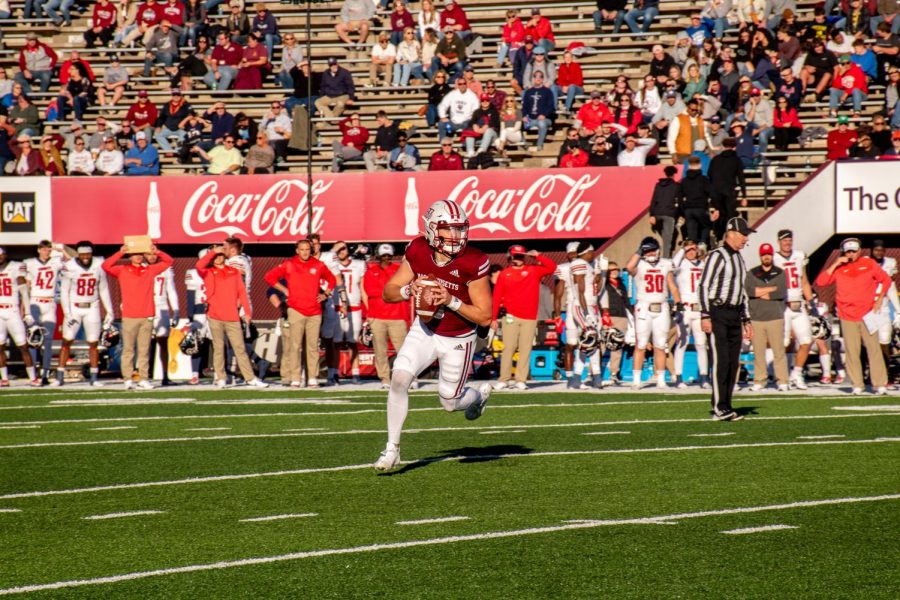Up until the last few years, Football Bowl Subdivision teams scheduled Football Championship Subdivision teams during their non-conference schedule in order to make the road to a bowl game that much easier.
Appalachian State’s 34-32 victory over Michigan on Sept. 1, 2007 certainly made the BCS stop, if not pause that line of thinking. Also, in case any teams thought that game was a fluke, the upsets have only piled on since then.
Granted, most FBS-FCS matchups usually end up in favor of the FBS school (the FCS went 4-86 against the FBS), but for teams trying to compete for a bowl game, the risk is starting to be a little too high.
This year, the FCS already has six upsets against FBS schools.
In basketball, the time for smaller schools to shine comes in March. In football, however, the postseason is essentially divided up by how many people can fit in your stadium. That’s why teams like James Madison treat games against teams like Virginia Tech as if it’s a championship game instead of simply being grateful for the experience and the six-figure check.
Even though the game makes no difference to JMU’s chances at making the postseason (which starts in December), the game in September is the only chance it gets at being a “Cinderella.”
On the other hand, the FBS schools – especially the ones trying to make a bowl game – look at these games as exhibitions and most of the time, they are.
The school with more scholarships and depth overwhelms the smaller school by halftime, which gives the bench a chance to get quality minutes in these games.
This year, the FCS schools are much more difficult to beat. The most significant win for the FCS came when JMU defeated the then-No. 13 Hokies and essentially knocked the school out of the Associated Press Top 25.
Last week, Massachusetts gave the Wolverines all they could handle with a 20-point fourth quarter rally, eventually falling short, 42-37.
FCS teams in the top 10 were already beginning to get blacklisted by FBS teams for this exact reason and this season, FBS coaches across the country are vowing never to schedule an FCS team in order to avoid getting embarrassed at home.
“The dirty little secret is the top six to eight teams at our level can play with anyone,” Dukes coach Mickey Matthews said to ESPN on Sept. 13. “We struggle to find guaranteed games because no one wants to play us.”
Several things are happening in the landscape of college football that is making these upsets more frequent.
Aside from FBS teams overlooking their FCS matchups, the smaller division teams themselves are beginning to produce better players.
Nineteen FCS players heard their names called during the 2010 NFL Draft. The earliest selection came in the second round when the New York Jets selected offensive lineman Vladimir Ducasse from UMass.
That number should go up over the years as the FCS continues to improve.
Another factor is playing time.
Minutemen quarterback Kyle Havens probably would’ve had to redshirt last year transferring from a junior college had he chosen to play for an FBS school. In fact, there’s no guarantee he would’ve seen the field throughout the remainder of his college career.
Such is not the case with UMass, where he started right away and is now arguably the best quarterback in the Colonial Athletic Association.
In fact, the transfer rules in general encourage disgruntled players to play for an FCS school. The NCAA forces players transferring within the FBS to sit out one season, but when transferring to an FCS school, players are allowed to play immediately.
Former Michigan State running back Caulton Ray is a great example of someone who took advantage of the rule. After two seasons of very limited playing time (redshirted as a freshman and had 40 carries as a redshirt freshman), Ray transferred to Western Illinois, where he made an impact immediately.
As a sophomore, Ray has 228 yards rushing on 51 carries with three touchdowns. Had he transferred to anywhere in the FBS, he would have to sit out another season and surely wouldn’t be making the impact that he is now.
The bottom line is that the margin between the FBS and the FCS is much smaller than it used to be and that difference will only continue to shrink. Villanova is currently considering an invitation to join the Big East, something that would normally be a no-brainer.
However, considering the fact that the Wildcats are probably one of the best-kept secrets in all of college football – a team that dominates the FCS every year and is good enough to at least be in the middle of the pack in any BCS conference – a move to the Big East would likely ruin their mystique and they would be wise to stay where they are now.
The days where the size of a school’s checkbook dictated the success of its program are long gone. As the FBS is finding out, these so called “second-rate programs” have first-rate talent.
Adam Miller is a Collegian columnist. He can be reached at [email protected].







hair salon columbus ohio • Aug 30, 2013 at 5:42 pm
Hello There. I found your blog using msn. This is a very well
written article. I will be sure to bookmark it and return to read more
of your useful info. Thanks for the post. I will certainly return.
Ericka • Jul 27, 2013 at 1:41 pm
Woah! I’m really enjoying the template/theme of this blog. It’s simple, yet effective.
A lot of times it’s very difficult to get that “perfect balance” between usability and visual appearance. I must say you have done a great job with this. In addition, the blog loads very fast for me on Chrome. Superb Blog!
Fermin • Jul 25, 2013 at 2:04 pm
I feel that is among the most vital info for me. And i’m happy reading your article. However should commentary on some general things, The website style is wonderful, the articles is in point of fact nice : D. Good process, cheers
GHD NZ • Nov 20, 2011 at 12:11 am
Hello my loved one! I want to say that this post is awesome, great written and include almost all vital infos. I’d like to look more posts like this .
mcg • Mar 3, 2011 at 2:30 am
Weber State could also go to the new WAC.
mcg • Dec 26, 2010 at 9:04 pm
Villanova-Big East
UMass-MAC or Big East
James Madison-Sun Belt, Conference USA or longshot Big East
Richmond-Sunbelt, Conference USA or longshot Big East
Old Dominion-Sun Belt, Conference USA or longshot Big East
Delaware-MAC, Big East Conference USA
Youngstown State-MAC
Dayton-MAC
Missouri State-MAC, WAC or longshot Mountain West or even longer shot replacement Big-12
Illinois State and Southern Illinois-MAC
Appalachian State-Sun Belt, Big East, Conference USA, longshot ACC or SEC
South Carolina State-Sun Belt, Big East or Conference USA, longshot ACC or SEC
if Montana changes mind and goes FBS, they will bring Montana State with them and will play in WAC or longshot Mountain West
Weber State and Northern Iowa would either be in WAC or longshot Mountain West
Eastern Washington and Portland State, and Sacremento State would join a new WAC
These teams I will mention below could move up, dependant upon situations. Here is my list:
Rhode Island, Maine and New Hampshire
Harvard, Yale and Georgetown
Eastern Illinois, Western Illinois, Eastern Kentucky, Murray State, Indiana State, Butler, Elon, Furman and Towson
VMI and The Citadel
Liberty, Jackson State, Jacksonville State, Wofford, Coastal Carolina, Western Carolina North Carolina A&T, Tennesee State, Tennesee Martin, Tennesee Tech Alabama State and Florida A&M
North Dakota, North Dakota State, South Dakota, South Dakota State-WAC
Northern Arizona, Northern Colorado, Cal-Poly, Cal-Davis, Southern Utah
Northwestern State, McNeese State, Georgia State, Georgia Southern, Southern, William&Mary
I feel that even some of these schools need stadiums renovations, increase in sports played by by both genders, invites, and other factors, some of these schools can and will move up to FBS ball. I think the Big East and other conferences need to separate their basketball only from their football schools because football is where the money is at. Football is America’s sport.
By 2012 some of these and many other changes in college football as a whole I believe will happen.
Adam Miller • Sep 22, 2010 at 11:40 am
Dan, I didn’t mean that the wins and losses don’t count. I meant that it won’t affect a team’s chances of making the postseason the way an FBS team losing to an FCS team would. In the FCS, all that really matters is beating the teams in your conference whereas an FBS school could lose out on a bowl game with a loss to anyone.
Dan • Sep 22, 2010 at 9:35 am
“Even though the game makes no difference to JMU’s chances at making the postseason…”
Adam, the win actually does count toward the team’s FCS win total. A win against an FBS opponent will always count. It’s the FBS schools who can only count the win towards their bowl-eligible total if the FCS school has more than 60 scholarships.